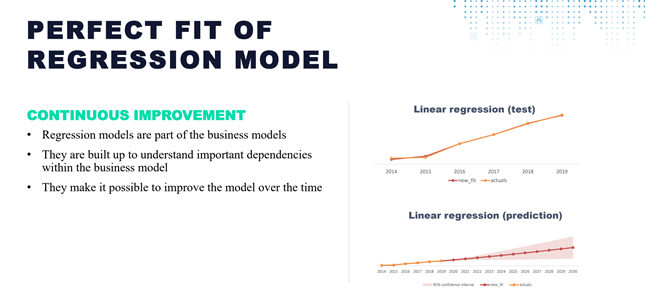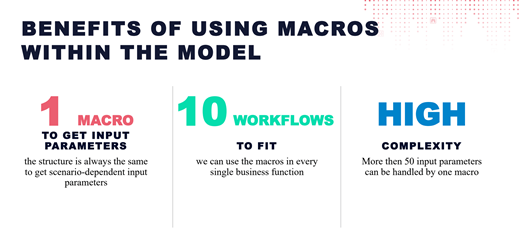Alteryx Success Stories
Learn how Alteryx customers transform their organizations using data and analytics.STORIES WANTED
Showcase your achievements in the Maveryx Community by submitting a Success Story now!
SUBMISSION INSTRUCTIONS- Community
- :
- Community
- :
- Learn
- :
- Success Stories
- :
- How Munich Airport Predicts the Future With Data
How Munich Airport Predicts the Future With Data
- Subscribe to RSS Feed
- Mark as New
- Mark as Read
- Bookmark
- Subscribe
- Printer Friendly Page
- Notify Moderator

Overview of Use Case
Munich Airport, in Germany, is one of the largest airports in the world with several moving parts and business components. The airport’s Strategic Planning team needs to account for all of the data around these components and make decisions on how best to develop the airport both in the short and long term. This use case shows how the strategic team utilized the Alteryx platform to improve all of their statistical modeling and reporting; from a slow manual process in spreadsheets, to Alteryx Designer and Server for faster updates, data integration, model manipulation, scheduling needs, and a more effective way to predict performance across multiple business segments.
Describe the Business Challenge Problem
Munich Airport could almost be considered its own city. Annually they have over 400,000 take-offs, 36 million passengers, 300,000 tons of freight, 35,000 employees, and 550 businesses with €150 million in annual earnings. The airport has 65 restaurants bars and cafes, 150 shops, 2 hotels (800 hotel rooms), 14 parking garages, a brewery, a church, and a clinic. All of these items are data points that the strategic team must account for when making their decisions for the development and future of the airport. The strategic team used Excel to model in with over 50 spreadsheets, an extremely manual and complex process that only two people could utilize it. At times, it would crash (cause a blue screen) people’s computers and it took over two weeks to update the data and models in the spreadsheets. The strategic business models for the future needed to integrate all these variables while also providing reliable insights in a timely manner, which their spreadsheet process couldn’t accomplish.
Describe your Working Solution
Once Munich Airport acquired Alteryx, they left their Excel process and began developing a dynamic all-encompassing model that takes into account both short, moderate, and long-term goals. The model accounts for sever market parameters including passenger entries, energy costs, financial inputs, investment, and infrastructure planning.

Lots of statistics have been integrated into the model including Key Performance Indicators (KPI’s) for both financial and non-financial items. The model helps the strategic team develop quantifiable goals for the future like infrastructure project timelines, increasing customer satisfaction, shortening connection times and developing multi-model air traffic courses. Overall this model helped them set the benchmark for what the Munich airport should look like by 2025, however, there were multiple steps taken prior to reaching this point.
They first needed to develop and test parameters to build this model. For example, in order to strategically plan how to increase construction and expand Terminal One, they had to consider passengers, square meters, consumer price index and salary development data. They developed this parameter-driven model to help make data-driven decisions.

To define these parameters, they leveraged background statistics including correlation analysis for each of their defined parameters. An example is the effect of exchange rates on the airports' total revenue, square meters, or passenger development. From the results of those analyses, they developed regression models that are a part of their prediction model. They built them to understand the dependencies between the different business units. These analyses increase the possibility to improve these models, and if the parameters change the model will reflect the change, they can then calculate the range of different developments.

The strategy team integrated these models into an Alteryx workflow, which included their linear regression model, the scatter plot and the prediction model all in one workflow to tie all the data points together. This workflow includes millions of rows with internal and external data that unions the different sources together with great time savings.

To model within Alteryx, they created macros to help identify insights around the different business units at the airport. As a result of having many different lines of business to account for, they need to calculate different strategic scenarios. For example, constructing an office building before another structure. They have 5 different macros to help with defining what those insights and parameters are for each business unit. The macros they built in Alteryx allow them to handle 10 complex workflows at one and strengthen the integration between data sources within their models.
The strategy team doesn’t just use Alteryx for long term development, it’s also used for current business operations. The strategy team did a correlation analysis for customer intelligence to know if their range of perfumes were satisfying customer needs. The number of google brand searches was the measure with which they selected to most accurately reflect customer preferences. They matched their brands with the google matches to change their perfume assortment, identifying three new brands to add and thus directly increasing sales. It only required 6 functions to develop this workflow, to test and get the desired result, all within a short amount of time.

Describe the benefits you have achieved
Alteryx allows the strategic team to easily build models for each business, and it gives them the ability to incorporate particularly complex predictive statistics and analytical parameters into their workflows. What once took two weeks to update now takes two days, they couldn’t incorporate their statistics in their spreadsheets but in Designer, they’re able to develop workflows and models with ease.
There are several different parameters that their models account for, and the macros allow them to leverage more than 50 parameters at once, creating major time savings for the strategic team. Workflows used to take 4 hours to set up, now with macros it only takes 30 minutes to set one up across the different business segments. And if there is ever any change in their model or workflows, they don’t have to test each workflow individually; changes can be made at the macro level which will have a cascading effect on each of the 10 workflows that reside within.

Another great benefit the Alteryx platform provides is the ability to help manage and create scenarios of future development without the know-how of modeling with Server. The strategic team can integrate different departments into the modeling process who are concerned with the content and are not IT or data science-related professionals. It gives those departments exposure to Alteryx and that they can use it for their own daily reporting and operational needs.
Their next step is to take their most complex model (which took a year to build and two months to update) and place it in Alteryx. With all the effort it took to construct the model in Excel, they’re confident in Alteryx’s ability to house this model, improve it and help the strategy team accomplish any other complex reporting or modeling task they choose to take on.
Related Resources
The entire presentation can be found here.
-
Adobe
2 -
Alteryx Connect
5 -
Alteryx Designer
202 -
Alteryx for Good
1 -
Alteryx Promote
2 -
Alteryx Server
66 -
Alteryx using Alteryx
29 -
Americas
158 -
Analyst
108 -
Analytics Leader
54 -
Asia Pacific
29 -
AWS
9 -
BI + Analytics + Data Science
100 -
Business Leader
37 -
C-Leader
18 -
Data Prep + Analytics
230 -
Data Science + Machine Learning
113 -
Data Scientist
14 -
Department: Other
14 -
Education
18 -
Energy + Utilities
5 -
Europe + Middle East + Africa
58 -
Experian
2 -
finance
29 -
Financial Services
33 -
Healthcare + Insurance
21 -
Human Resources
19 -
Information Technology
25 -
IT
31 -
Life Sciences + Pharmaceuticals
3 -
Manufacturing
20 -
Marketing
16 -
Media + Entertainment
12 -
Microsoft
52 -
Operations
38 -
Other
10 -
Process Automation
60 -
Professional Services
69 -
Public Sector
15 -
Qlik
1 -
Retail + CPG
32 -
Sales and Service
24 -
Salesforce
9 -
SAP
11 -
Snowflake
6 -
Tableau
71 -
Tech Partner: Other
86 -
Technology
34 -
Telecommunications
5 -
Teradata
5 -
Thomson Reuters
1 -
Transportation + Logistics
25 -
Travel + Hospitality
4 -
UiPath
1
- « Previous
- Next »